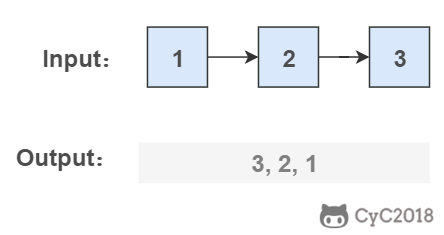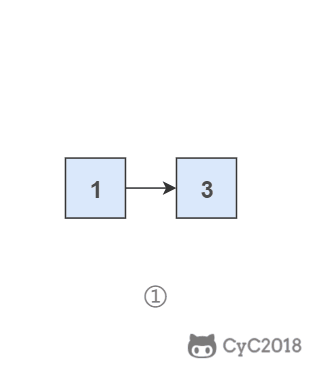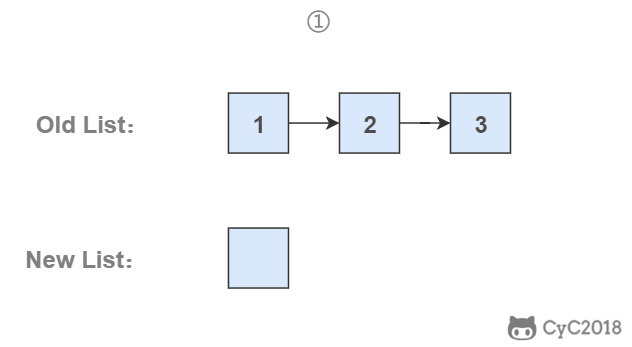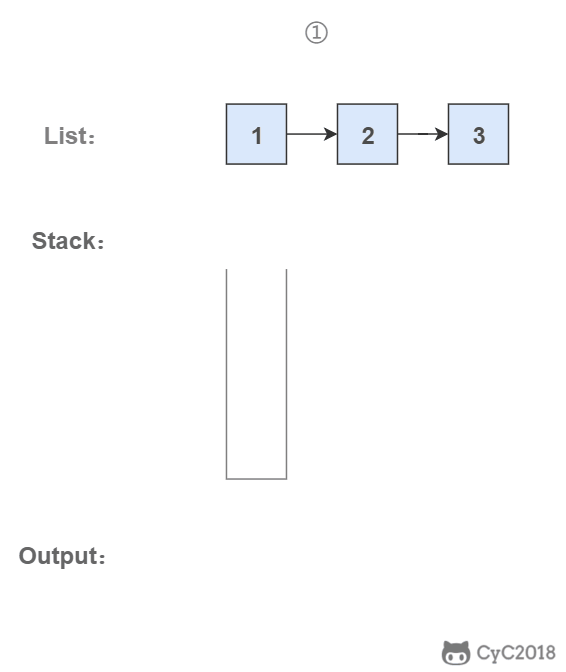# 6. 从尾到头打印链表
# 题目链接
# 题目描述
从尾到头反过来打印出每个结点的值。

# 解题思路
# 1. 使用递归
要逆序打印链表 1->2->3(3,2,1),可以先逆序打印链表 2->3(3,2),最后再打印第一个节点 1。而链表 2->3 可以看成一个新的链表,要逆序打印该链表可以继续使用求解函数,也就是在求解函数中调用自己,这就是递归函数。
public ArrayList<Integer> printListFromTailToHead(ListNode listNode) {
ArrayList<Integer> ret = new ArrayList<>();
if (listNode != null) {
ret.addAll(printListFromTailToHead(listNode.next));
ret.add(listNode.val);
}
return ret;
}
# 2. 使用头插法
头插法顾名思义是将节点插入到头部:在遍历原始链表时,将当前节点插入新链表的头部,使其成为第一个节点。
链表的操作需要维护后继关系,例如在某个节点 node1 之后插入一个节点 node2,我们可以通过修改后继关系来实现:
node3 = node1.next;
node2.next = node3;
node1.next = node2;

为了能将一个节点插入头部,我们引入了一个叫头结点的辅助节点,该节点不存储值,只是为了方便进行插入操作。不要将头结点与第一个节点混起来,第一个节点是链表中第一个真正存储值的节点。

public ArrayList<Integer> printListFromTailToHead(ListNode listNode) {
// 头插法构建逆序链表
ListNode head = new ListNode(-1);
while (listNode != null) {
ListNode memo = listNode.next;
listNode.next = head.next;
head.next = listNode;
listNode = memo;
}
// 构建 ArrayList
ArrayList<Integer> ret = new ArrayList<>();
head = head.next;
while (head != null) {
ret.add(head.val);
head = head.next;
}
return ret;
}
# 3. 使用栈
栈具有后进先出的特点,在遍历链表时将值按顺序放入栈中,最后出栈的顺序即为逆序。

public ArrayList<Integer> printListFromTailToHead(ListNode listNode) {
Stack<Integer> stack = new Stack<>();
while (listNode != null) {
stack.add(listNode.val);
listNode = listNode.next;
}
ArrayList<Integer> ret = new ArrayList<>();
while (!stack.isEmpty())
ret.add(stack.pop());
return ret;
}